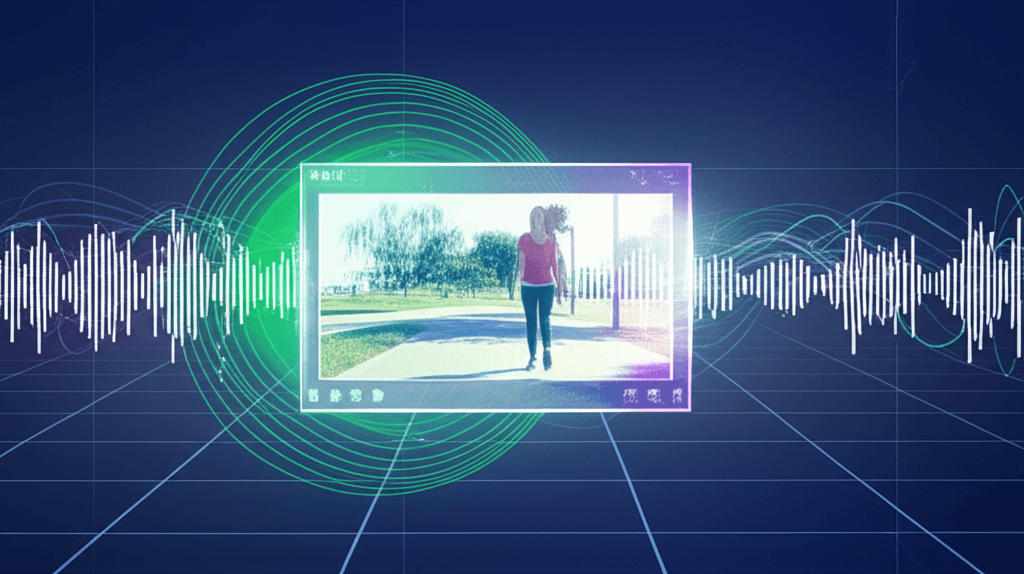Google Veo 3: AI Video Finds Its Voice with Millions of Users
Millions embrace Veo 3's groundbreaking synchronized audio and 4K realism, reshaping filmmaking and content creation.
May 31, 2025

Google's latest AI video generation model, Veo 3, has seen a meteoric rise in usage, with millions of videos generated by users within just a few days of its launch, according to Google DeepMind CEO Demis Hassabis.[1] This rapid adoption highlights the growing interest and accessibility of sophisticated AI tools for creative expression and content generation. Veo 3, unveiled at Google I/O 2025, represents a significant advancement in AI video technology, primarily due to its new capability of generating synchronized audio, including dialogue, sound effects, and ambient noise, alongside high-definition video.[2][3][4][5][6][7][8] This marks a departure from previous "silent era" AI video models and positions Veo as a strong competitor to other leading models in the space, such as OpenAI's Sora.[2][4][8]
The capabilities of Veo 3 extend beyond just adding sound. The model boasts improved realism and fidelity, with the ability to output videos in 4K resolution and a better understanding of real-world physics, resulting in more natural and consistent movement of people, animals, and objects.[9][10][5] Users have reported that Veo 3 exhibits impressive adherence to complex text and image prompts, allowing for more accurate translation of creative visions into video.[9][11][5] This includes understanding nuanced instructions for camera movements, angles, and specific cinematic styles.[12][13][14][15][16] For instance, users can describe a short story in their prompt, and Veo 3 can generate a clip that brings that narrative to life, complete with lip-synced dialogue.[13][11] The model can also generate video from an image prompt, maintaining the style of the reference image while incorporating instructions from an accompanying text prompt.[5][17] Google has also introduced Flow, an AI filmmaking tool designed specifically for Veo, Imagen (Google's image generation model), and Gemini, allowing creators to manage story elements and weave narratives with greater control.[13][18][16][19]
The implications of Veo 3 for the AI industry and various creative fields are substantial. For filmmakers and content creators, Veo offers a powerful tool to streamline production, prototype ideas quickly, and potentially reduce costs associated with traditional filmmaking.[10][18][17][7] Influencers and marketers are expressing enthusiasm for its potential to enhance creativity and produce high-quality content more efficiently.[18] Some predict that AI-generated visuals could eventually replace traditional CGI in movies.[18] Businesses are also exploring Veo's capabilities for creating promotional content and product demos with greater speed and scalability.[12][10][17] The democratization of high-end video production tools means that individual creators may soon be able to compete with larger production studios.[10] However, this rapid advancement also brings challenges. The increasing realism of AI-generated videos raises significant ethical concerns, particularly regarding the potential for creating deepfakes and spreading misinformation.[2][11][20][21][7][22][23] Recognizing these risks, Google has stated its commitment to responsible development and has implemented safeguards such as SynthID, a technology that watermarks AI-generated content to help distinguish it from authentic footage.[2][11][21][24][25]
The availability of Veo 3 is currently expanding. Initially launched in the US for Google AI Ultra subscribers and enterprise users via Vertex AI, Google has since announced its rollout to 71 new countries for paid subscribers through the Gemini app and its web version.[2][4][26][27][28][25][29] Google AI Pro subscribers in these countries will have limited access, including a trial pack of video generations.[26][28][25] While some early user experiences have noted limitations in the number of daily generations and the time taken to generate videos, the overall sentiment highlights the impressive quality and the groundbreaking addition of synchronized audio.[6][30] The rapid adoption and evolving capabilities of models like Veo 3 signal a transformative period for video creation, where the lines between human-generated and AI-generated content are becoming increasingly blurred.[10][4][18]
In conclusion, the swift uptake of Google's Veo 3, evidenced by millions of videos generated shortly after its release, underscores the significant impact of advanced AI video generation tools.[1] With its novel ability to create synchronized audio and its enhanced visual realism, Veo 3 offers powerful new avenues for creative expression and content production.[9][2][13][5] While this technology opens up exciting possibilities for filmmakers, marketers, and individual creators, it also necessitates careful consideration of the ethical implications, particularly the potential for misuse in generating deceptive content.[2][11][20][7][23] As Google continues to refine Veo and expand its accessibility, the industry will be closely watching its development and the broader societal adjustments required to navigate this new era of AI-powered media.[2][5][7][31]
Sources
[2]
[6]
[10]
[12]
[13]
[14]
[15]
[16]
[17]
[18]
[19]
[21]
[22]
[23]
[24]
[25]
[27]
[28]
[29]
[30]
[31]